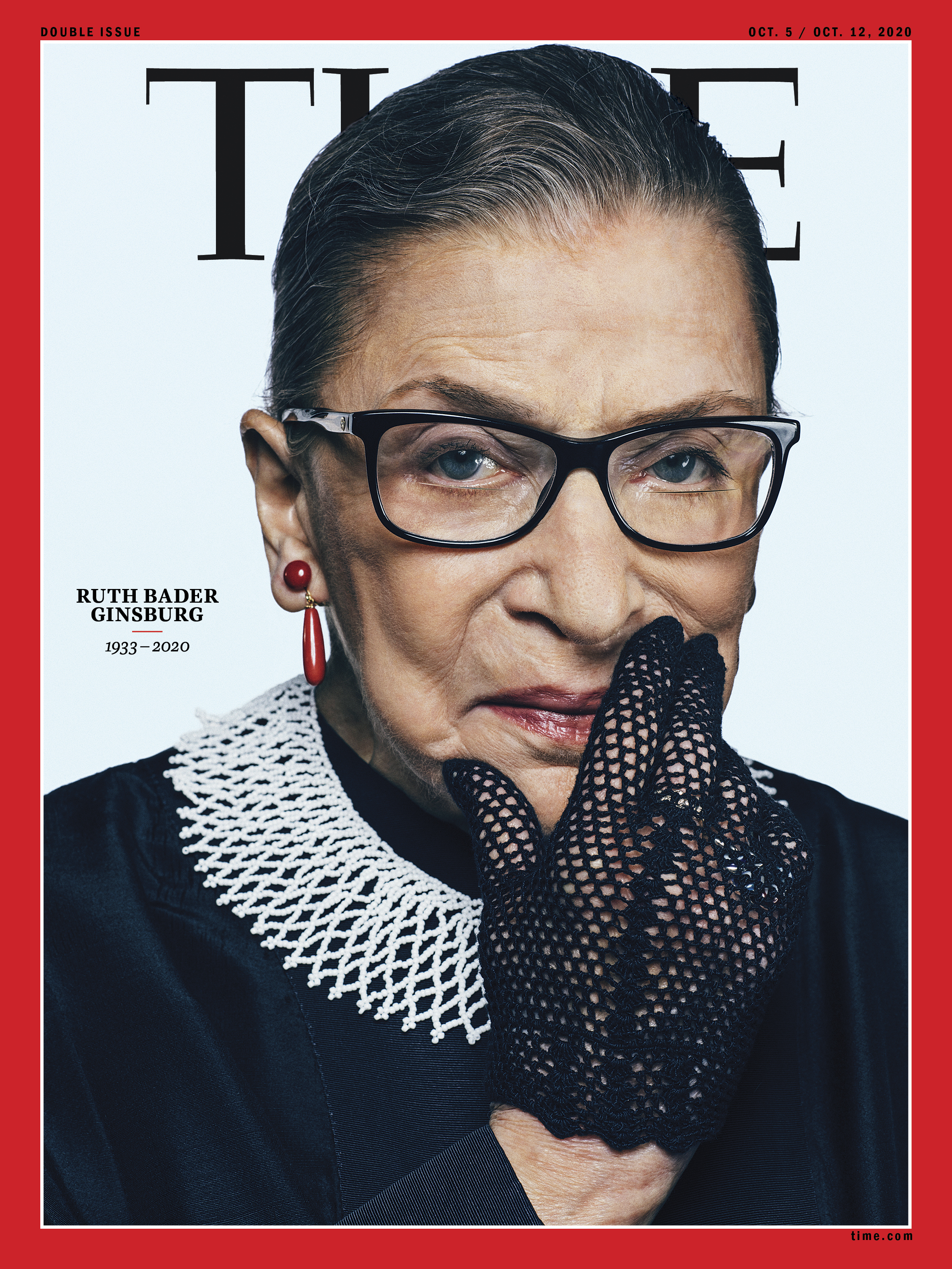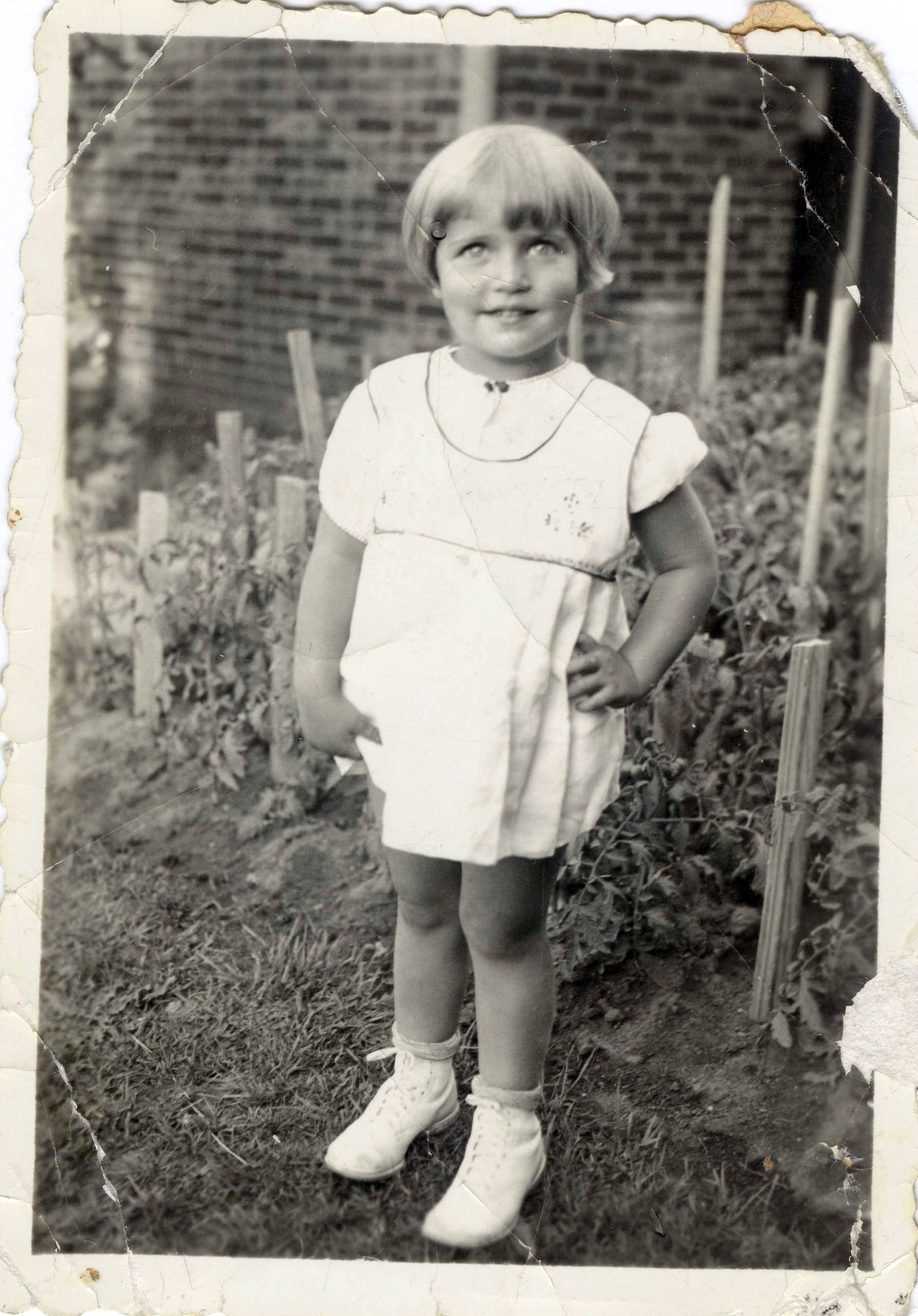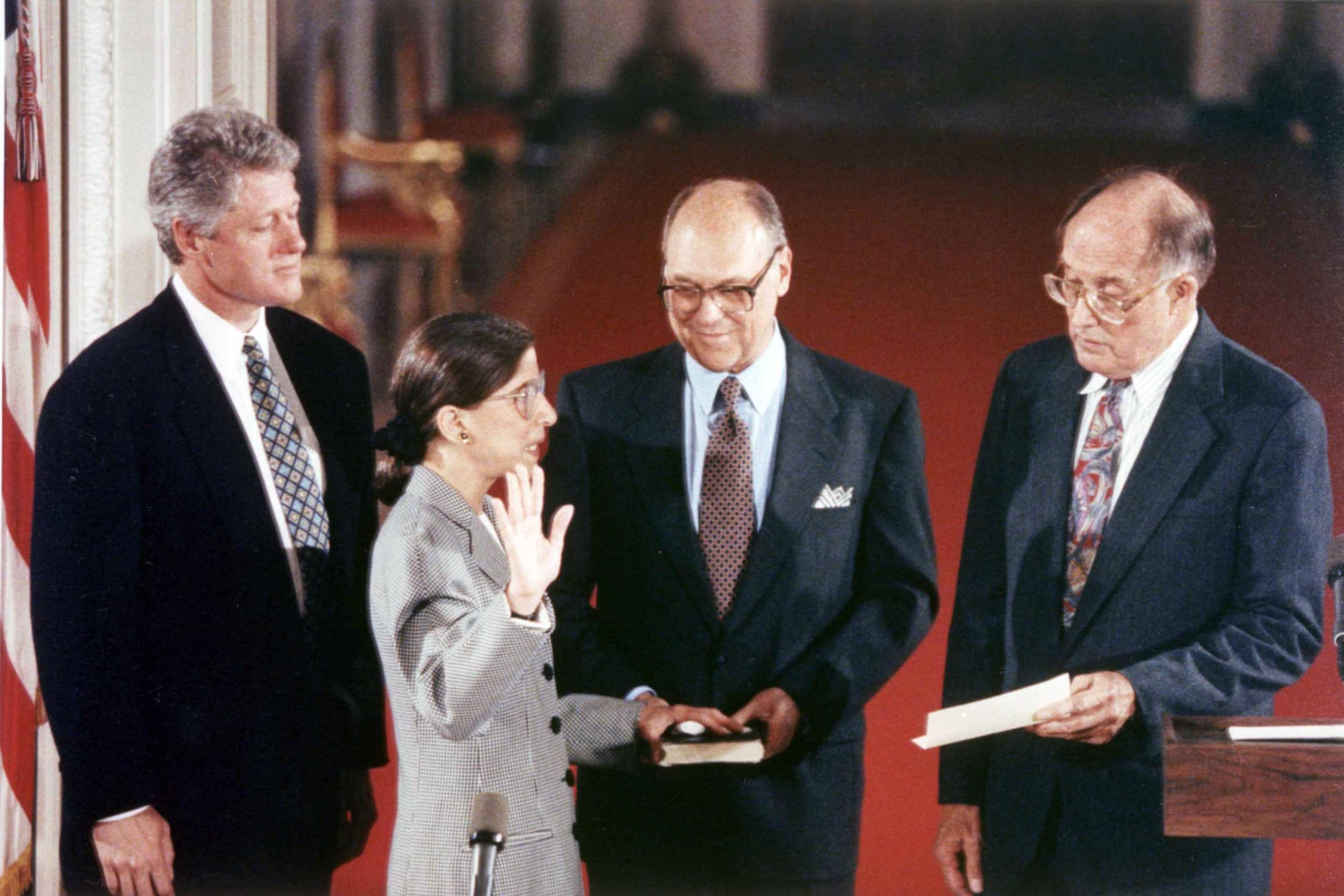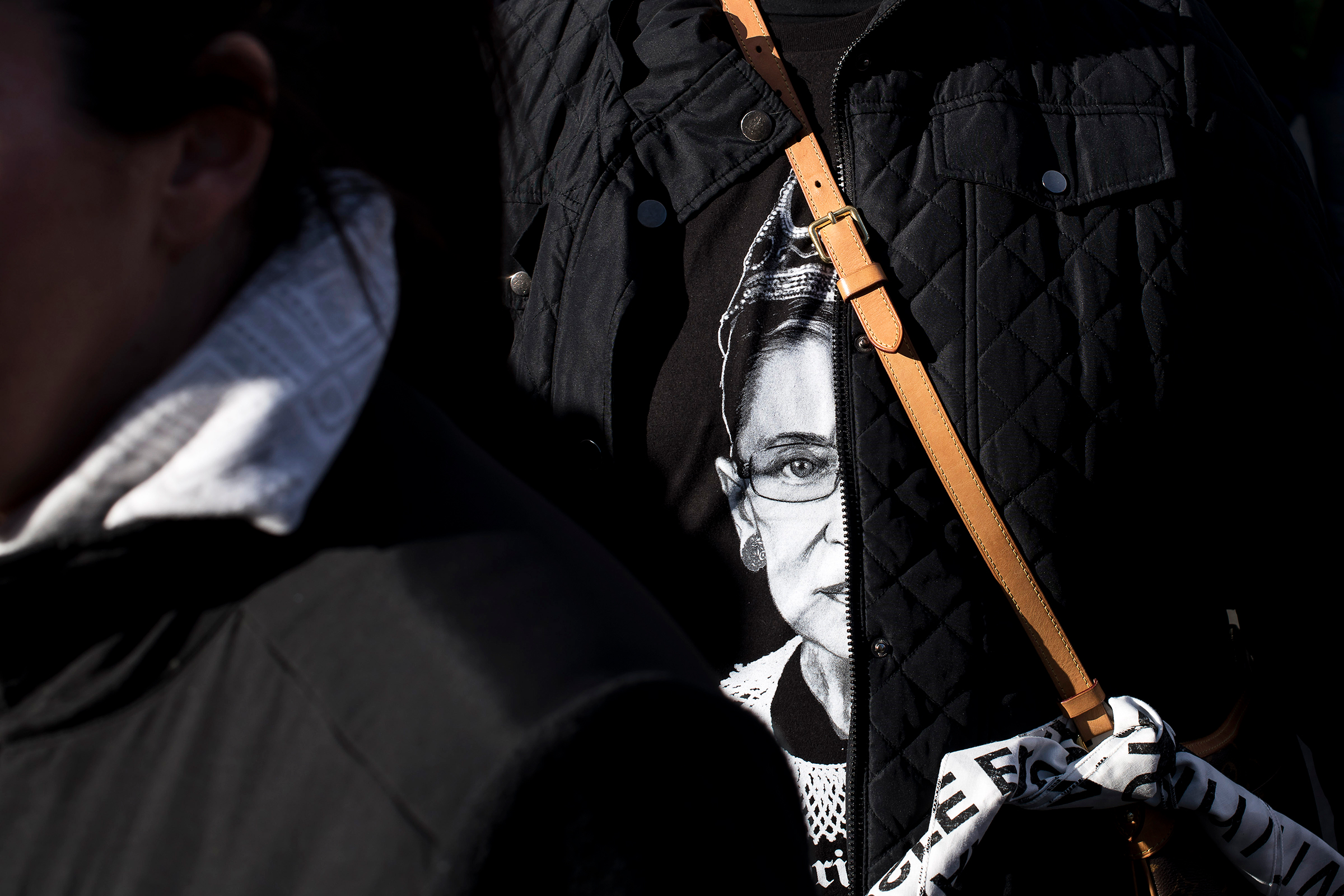On March 15, 2019, legions of Ruth Bader Ginsburg’s admirers celebrated her 86th birthday by dropping to the ground and grinding out the Super Diva’s signature plank poses on the steps of courthouses around the country.
This unusual tribute to a Supreme Court justice was one of the many ways a new generation has shown the love to the five-foot tall legal giant who made the lives they live possible. But by Sept. 18, her iron will and gritty determination were no longer enough to propel her to court. Ginsburg died on Friday at the age of 87 of complications from metastatic pancreatic cancer, according to a statement released by the Supreme Court.
In the early ’70s—after Gloria Steinem was working underground as a Playboy Bunny to expose sexism, and Betty Friedan was writing a feminist manifesto about “the problem with no name”—Ginsburg named the problem, briefed it, and argued it before the Supreme Court of the United States.

She was 39 then, on the receiving end of so much of the discrimination she would work to end, and she was just undertaking her first job as a litigator—as co-director of the Women’s Rights Project of the American Civil Liberties Union. In her “very precise” way, as Justice Harry Blackmun put it, she studied title, chapter, clause, and footnote of the legal canon that kept women down and overturned those that discriminated on the basis of sex in five landmark cases that extended the 14th Amendment’s equal rights clause to women. In that long, hard slog, she employed some novel devices, using “gender” (so as not to distract male jurists with the word “sex”) and representing harmed male plaintiffs when she could find one (to show that discrimination hurts everyone). And she never raised her voice.
When she was done, a widower could get the same Social Security benefits as a woman and a woman could claim the same military housing allowance as a man. A woman could cut a man’s hair, buy a drink at the same age, administer an estate, and serve on a jury.
By the time she left the ACLU, and before she donned her first black robe, Ginsburg had brought about a small revolution in how women were treated, wiping close to 200 laws that discriminated off the books. Over the next decades, first as a judge on the U.S. Court of Appeals for the District of Columbia, appointed by President Jimmy Carter in 1980, and then as the second woman on the Supreme Court, appointed by President Bill Clinton in 1993, she would become to women what Thurgood Marshall was to African Americans. She employed the same clause in the 14th Amendment he used to free former slaves to extend protection to the mentally ill who wanted to live outside institutions, gays who wanted to marry, immigrants who lived in fear, and, of course, females: those who wanted to be cadets at the Virginia Military Institute, have access to abortion, and, when pregnant, not be fired if they couldn’t perform duties their condition made, temporarily, impossible.
Her fans’ courthouse celebration was also a plea for the bionic Ginsburg to carry on, at least until the 2020 election. There was high anxiety when she fell asleep at the State of the Union in 2015 (a case of enjoying a fine California wine brought by Justice Anthony Kennedy to the justices pre-speech dinner) and even more when she missed the court’s 2019 opening session in January, her first such absence in 25 years. She hadn’t fully recovered from surgery to remove two cancerous nodules from her lungs. But she took her seat as the senior justice next to Chief Justice John Roberts in mid-February, picking up her full caseload. That following summer, she went through radiation to treat a cancerous tumor on her pancreas, her fourth brush with cancer. In July 2020, she announced that cancer had returned yet again. Despite receiving chemotherapy for lesions on her liver, the 87-year-old reasserted that she was still “fully able” to continue serving on the Supreme Court.

Baton-twirling bookworm
Joan Ruth Bader was born in 1933 in Brooklyn and came of age during the Holocaust, “a first-generation American on my father’s side, barely second-generation on my mother’s … What has become of me could happen only in America,” she said at her confirmation hearing.
True enough, but what would become of her was a long time coming. In an enthralling biography, Jane Sherron De Hart describes schoolgirl Ruth, who twirled a baton but was such a bookworm she tripped and broke her nose reading while walking. Her mother, who convinced her she could do anything, died just before Ruth, the class valedictorian, graduated and headed off to Cornell. There she met the tall, handsome Martin Ginsburg, and married him the minute she graduated Phi Beta Kappa—the first man, she said, who “cared that I had brain.” She’d been accepted to Harvard Law, where Marty was already enrolled. She calls meeting Marty “by far the most fortunate thing that ever happened to me.”
What happened next is proof of her maxim that a woman can “have it all,” just not all at once. Marty was called up to active duty, so instead of studying torts in Cambridge, Ginsburg found herself working as a claims examiner at the Social Security Administration in Fort Sill, Oklahoma—that is, until she was demoted with a pay cut for working while pregnant.

Life threw another wrench into the works when both were back at Harvard with a baby girl, and Marty was stricken with a rare testicular cancer. Ruth gathered notes from his classes and typed up his papers as well as her own, getting along on even less sleep than your usual new mother, all while being scolded for taking up a man’s seat by Dean Erwin Grisold. When her husband graduated and was offered a prestigious job at a white shoe law firm in New York, she gave up her last year at Harvard to finish at Columbia.
Once again, she felt the sting of the discrimination. Despite being the first student ever to serve on both the Harvard and Columbia Law Reviews and graduating at the top of her class, she couldn’t get a job at a premier law firm or one of the Supreme Court clerkships that went so easily to male classmates who ranked below her. According to De Hart, Judge Felix Frankfurter fretted a woman clerk might wear pants to chambers. Without bitterness, she calls anger a useless emotion; she noted that in the ’50s, “to be a woman, a Jew and a mother to boot—that combination was a bit too much.”

Battling discrimination
She didn’t get outwardly angry and only, after many years, got even. She took a lower court clerkship, researched civil procedure (and equality of the sexes in practice) in Sweden and wrote a book on the subject. She returned home to teach at the Newark campus of Rutgers Law, becoming the first adviser for the Women’s Rights Law Reporter. Despite being a progressive school, discrimination struck again. She learned she didn’t earn the same as a male colleague because, the dean explained, “he has a wife and two children to support. You have a husband with a good paying job in New York.” No wonder then, when she found herself surprisingly (given her husband’s medical history) but happily pregnant again, she took no chances and hid it.
After the birth of her son, James, she became a tenured professor at Columbia, co-authored the first case book on discrimination law, a work in progress as she changed much of it while litigating for the ACLU, until in 1980 she joined the Court of Appeals.
Then, in 1993, President Bill Clinton was elected and he wanted a Cabinet, and by extension a Supreme Court, that looked like America. Ginsburg was on the list, but so were a dozen others and she wasn’t at the top.
Even Clinton’s deliberations weren’t without a peculiar form of discrimination as he worried, “the women are against her.” He was right. To the feminists of the ’90s—who might be ignored by the White House if it weren’t for Ginsburg’s decades of opening doors—she was yesterday. The judge methodically chipping away at bias, without burning a bra or tossing a high heel, looked plodding and uninspiring; her friendship with her colleague on the district court, Scalia, looked suspect.
Enter Marty. “I wasn’t very good at promotion, but Marty was,” she told the late Gwen Ifill, a PBS anchor and managing editor. “He was tireless”—and beloved among lawyers, professors, and politicians. Women came around, reminded that she was a pioneer in their fight to overcome the patriarchy and a steadfast supporter of abortion rights, despite acknowledging in an interview that the country might be politically better off if the states had continued to legalize abortion rather than have Roe v. Wade as a singular target of its foes. Ginsburg was confirmed 96 to 3.


The Great Dissenter
She didn’t disappoint. In one case after another, she asked the right questions (and often the first one), cobbled together majorities and joined in elegantly reasoned opinions: striking down stricter requirements for abortion clinics designed to make the procedure extinct (Whole Woman’s Health v. Hellerstedt), and approving gay marriage (Obergefell v. Hodges), making the point during oral argument that if you can’t refuse a 70-year-old couple marriage because they can’t procreate, how could you use that excuse to deprive a gay one.
But it was her minority — not her majority — opinions that made her beloved to a new generation of women. As the court tilted right in 2006 after the retirement of Sandra Day O’Connor, Ginsburg made a point of reading, not just filing, her dissents to explain to the majority why they were wrong in hopes that “if the court has a blind spot today, its eyes will be open tomorrow.”
Here was a shy, understated incrementalist suddenly becoming the Great Dissenter. In Shelby County v. Holder, she said that relieving errant states of the close scrutiny of the Voting Rights Act was like “throwing away your umbrella in a rainstorm because you are not getting wet.” In Hobby Lobby, she was aghast that the court would deny costly contraception coverage to working women because of someone else’s religious beliefs. In the Ledbetter v. Goodyear Tire & Rubber Co. equal pay case, she asked how her brethren could penalize the plaintiff, who only got evidence of the disparity from an anonymous note, for missing a 180-day filing deadline given that salaries are kept secret. One person whose eyes were opened was Barack Obama. His first piece of legislation in 2009 was the Lilly Ledbetter Fair Pay Act.

Becoming the Notorious RBG
Ginsburg’s womansplaining caught the attention of New York University law student Shana Knizhnik, who uploaded Ginsburg’s dissents to Tumblr. Overnight, a younger generation of women, and their mothers and grandmothers, were reminded of what Ginsburg had done for them. Knizhnik joined with reporter Irin Carmon to write Notorious RBG: The Life and Times of Ruth Bader Ginsburg. The justice was soon a recurring character on Saturday Night Live, with a hyperkinetic Kate McKinnon issuing blistering “Ginsburns.” The justice’s 2016 memoir, My Own Words, was a New York Times bestseller. There were more books — adult, children’s and coloring. In 2018, Hollywood released a major motion picture, On the Basis of Sex, and the documentary RBG, which won an Emmy. Store shelves groan with merch: mugs (you Bader believe it), onesies (The Ruth will set you free), tote bags, bobblehead dolls, and action figures, one of the latest from her cameo in Lego Movie 2.
All this late-arriving fame rested uneasily on the shoulders of Ginsburg, who accepted it with dignity and took some pleasure at grandchildren’s shock that “so many people want to take my picture.” She kept a large supply of Notorious RBG T-shirts as a party favor for visitors.
At the heart of Hollywood’s treatment of Ginsburg wasn’t only the case Marty and his wife worked on together—an appeal of an IRS ruling—but a marriage of extraordinary compatibility and mutual support. After he recovered from cancer and had become a sought-after lawyer, he eagerly took on his share of domestic duties, which included feeding the children since, according to former Solicitor General Ted Olson, “Ruth wanted nothing whatsoever to do with the kitchen.” Marty was the fun parent (Ginsburg joked at her confirmation hearing that the children kept a log called “Mommy Laughed”) and a big-hearted host who happily roasted “Bambi,” Ruth’s name for whatever Scalia, her opera buddy, bagged on his last hunting trip. The pair were the subject of an actual comic opera, Scalia/Ginsburg, in which one scene depicts the over-emoting Scalia, locked in a dark room for excessive dissenting, and Ginsburg descending through a glass ceiling to rescue him.
A close observer of their marriage once said that neither Ginsburg would be who they were without the other. Marty once joked about being second banana: “As a general rule, my wife does not give me any advice about cooking and I do not give her any advice about the law. This seems to work quite well on both sides.” De Hart reprints the letter Marty put in a drawer in the bedside table as he was dying from a recurrence of his cancer. He was the “most fortunate” part of her life.
Marty lived to see his wife recognized beyond what the two imagined when they agreed to marry and be lawyers together, but died just before a slight she suffered for following him to New York was righted. In 2011, she was awarded an honorary degree from Harvard Law that Dean Griswold had denied her for taking her last credits at Columbia.
The longer she lived, the wider her reach and the deeper the appreciation for her years on the bench. At the opening concert of the National Symphony Orchestra in Sept. 2019, Kennedy Center chair David Rubinstein introduced the dignitaries in the audience. When he got to the justice, women rose to applaud her. Then, the men quickly joined in until everyone in the hall was standing, looking up at the balcony, cheering and whistling, as if they’d come to tell her that they knew what she had done for them, not to hear Shostakovich’s Piano Concerto #2.
This wasn’t an audience of liberals, but a cross-section of the capital touched by a once-young lawyer who saw unfairness and quietly tried to end it during her 60 years of public service.
Throughout the decades, Ginsburg quietly persisted—through discrimination she would seek to end, through the death of Marty, through more illness and debilitating treatments than any one person should have to endure—without complaint, holding on and out, until sheer will was no longer enough.
Correction, Sept. 24
The original version of this story contained a number of errors that have been corrected. To celebrate Ginsburg’s 86th birthday, her fans did planks, not push-ups. Ginsburg’s start at the ACLU came after Gloria Steinem and Betty Friedan began their work, not concurrently. When Ginsburg began working for the ACLU, she was 39, not 37. When she missed a court session in 2019, it was for the first time in 25 years, not 26, and she had had two nodules removed, not three. Ginsburg said that her husband was the first man who cared that she had a brain, not who loved her for her brain; her quip about a woman having it all was also paraphrased. When Martin Ginsburg had cancer, she gathered his class notes and typed his papers, but did not personally attend his classes. While she learned Swedish to study civil procedure in Sweden, her book on the topic was in English. She advised the Women’s Rights Law Reporter, rather than founding it. On the Supreme Court, she often asked the first question during arguments, but not the majority of the time across all cases; she sometimes read her dissents aloud before Sandra Day O’Connor retired; and her position in Hobby Lobby about imposed religious beliefs was paraphrased. Steve Mnuchin did not produce The Lego Movie 2. Additionally, the friend who observed that Martin and Ruth Ginsburg would not be who they were without the other was not a Supreme Court Justice.
More Must-Reads from TIME
- Donald Trump Is TIME's 2024 Person of the Year
- Why We Chose Trump as Person of the Year
- Is Intermittent Fasting Good or Bad for You?
- The 100 Must-Read Books of 2024
- The 20 Best Christmas TV Episodes
- Column: If Optimism Feels Ridiculous Now, Try Hope
- The Future of Climate Action Is Trade Policy
- Merle Bombardieri Is Helping People Make the Baby Decision
Contact us at letters@time.com